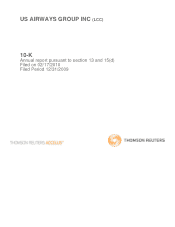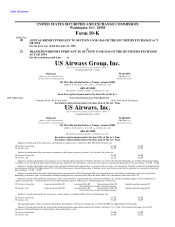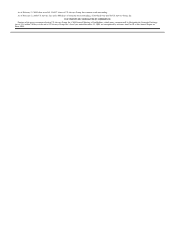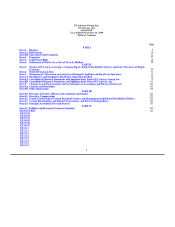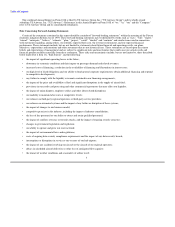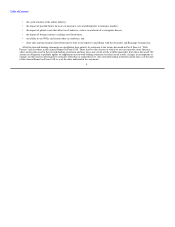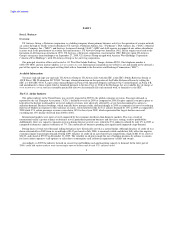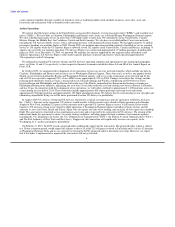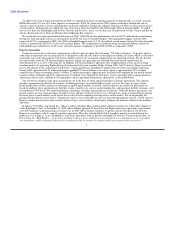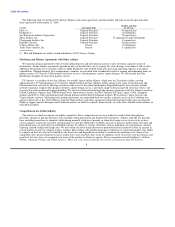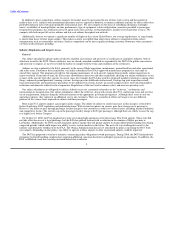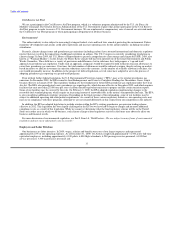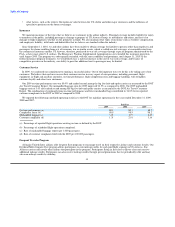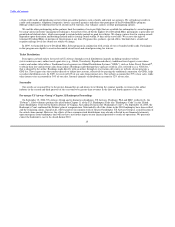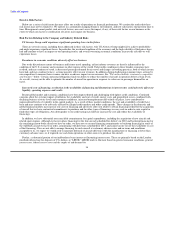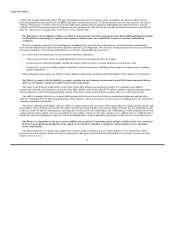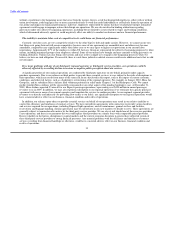US Airways 2009 Annual Report Download - page 11
Download and view the complete annual report
Please find page 11 of the 2009 US Airways annual report below. You can navigate through the pages in the report by either clicking on the pages listed below, or by using the keyword search tool below to find specific information within the annual report.
Table of Contents
In addition to price competition, airlines compete for market share by increasing the size of their route system and the number of
markets they serve. Airlines with international operations are less exposed to domestic economic conditions and may be able to offset less
profitable domestic fares with more profitable international fares. We also compete on the basis of scheduling (frequency and flight
times), availability of nonstop flights, on-time performance, type of equipment, cabin configuration, amenities provided to passengers,
frequent flyer programs, the automation of travel agent reservation systems, on-board products, markets served and other services. We
compete with both major full service airlines and low-cost airlines throughout our network.
Additionally, because we operate a significant number of flights in the eastern United States, our average trip distance, or stage length,
is shorter than those of other major airlines. This makes us more susceptible than other major airlines to competition from surface
transportation such as automobiles and trains. Surface competition can be more significant during economic downturns when consumers
cut back on discretionary spending.
Industry Regulation and Airport Access
General
Our airline subsidiaries operate under certificates of public convenience and necessity or certificates of commuter authority, both of
which are issued by the DOT. These certificates may be altered, amended, modified or suspended by the DOT if the public convenience
and necessity so require, or may be revoked for failure to comply with the terms and conditions of the certificates.
Airlines are also regulated by the FAA, primarily in the areas of flight operations, maintenance, ground facilities and other operational
and safety areas. Pursuant to these regulations, our airline subsidiaries have FAA-approved maintenance programs for each type of
aircraft they operate. The programs provide for the ongoing maintenance of such aircraft, ranging from periodic routine inspections to
major overhauls. From time to time, the FAA issues airworthiness directives and other regulations affecting our airline subsidiaries or one
or more of the aircraft types they operate. In recent years, for example, the FAA has issued or proposed mandates relating to, among other
things, enhanced ground proximity warning systems, fuselage pressure bulkhead reinforcement, fuselage lap joint inspection rework,
increased inspections and maintenance procedures to be conducted on certain aircraft, increased cockpit security, fuel tank flammability
reductions and domestic reduced vertical separation. Regulations of this sort tend to enhance safety and increase operating costs.
Our airline subsidiaries are obligated to collect a federal excise tax, commonly referred to as the "ticket tax," on domestic and
international air transportation. Our airline subsidiaries collect the ticket tax, along with certain other U.S. and foreign taxes and user fees
on air transportation, and pass along the collected amounts to the appropriate governmental agencies. Although these taxes are not our
operating expenses, they represent an additional cost to our customers. There are a number of efforts in Congress to raise different
portions of the various taxes imposed on airlines and their passengers.
Most major U.S. airports impose a passenger facility charge. The ability of airlines to contest increases in this charge is restricted by
federal legislation, DOT regulations and judicial decisions. With certain exceptions, air carriers pass these charges on to passengers.
However, our ability to pass through passenger facility charges to our customers is subject to various factors, including market conditions
and competitive factors. The current cap on the passenger facility charge is $4.50 per passenger, although there are efforts to raise the cap
to a higher level before Congress.
On October 10, 2008, the FAA finalized new rules governing flight operations at the three major New York airports. These rules did
not take effect because of a legal challenge, but the FAA has pushed forward with a reduction in the number of flights per hour at
LaGuardia. Additionally, the DOT recently finalized a policy change that will permit airports to charge differentiated landing fees during
congested periods, which could impact our ability to serve certain markets in the future. The new rule was challenged in court by the
industry and ultimately withdrawn by the FAA. The Obama Administration has not yet articulated its policy concerning the New York
area airports. Depending on that policy, our ability to operate at those airports or other constrained airports could be impacted.
The DOT has proposed several new initiatives concerning airline obligations toward passengers. During 2008, the DOT finalized rules
pertaining to denied boarding compensation requiring additional consumer disclosure and higher payments to passengers. In addition, the
DOT established a task force on long on-board delays that resulted in
9

